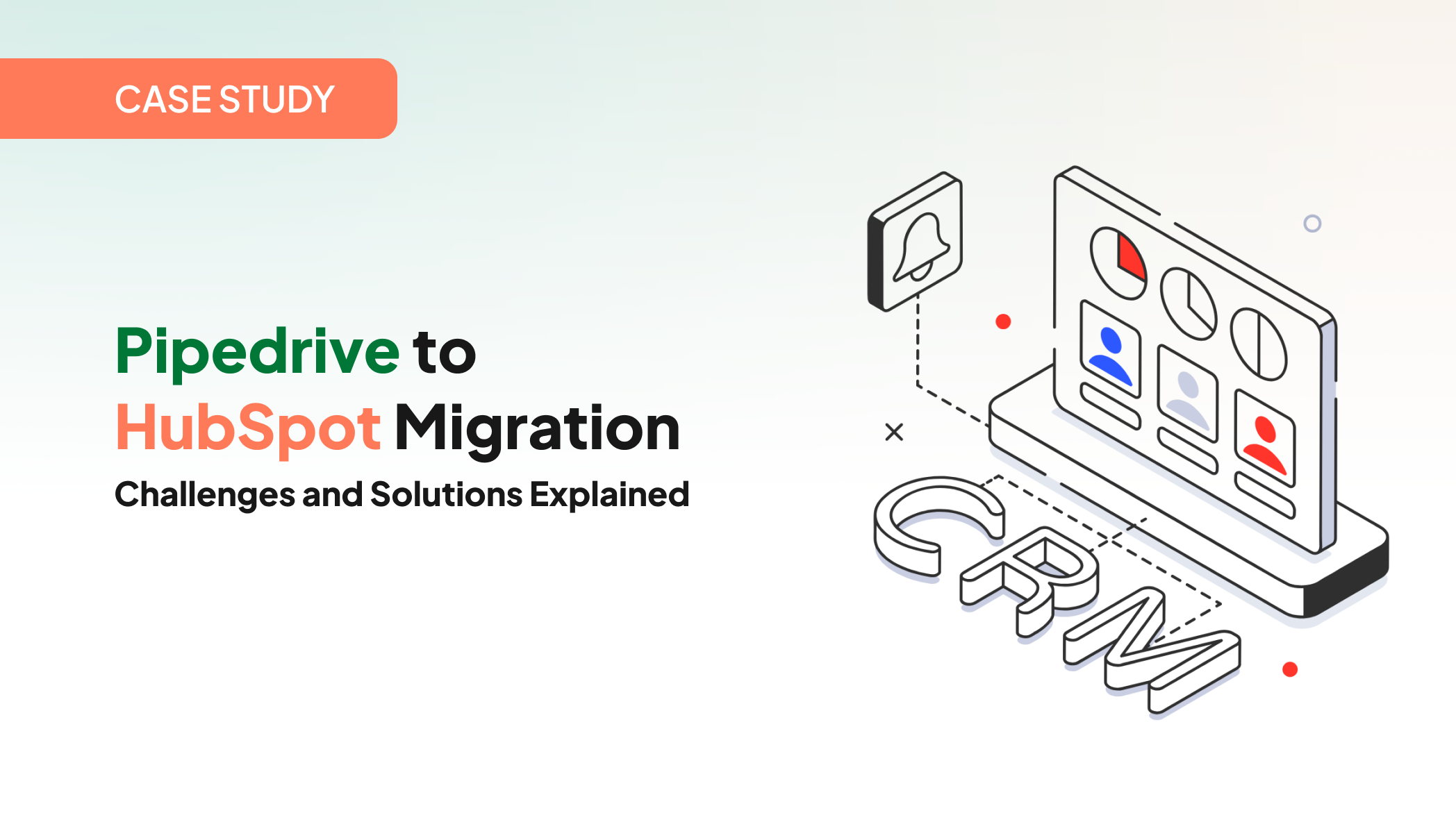Problem Statement Our client was managing customer information and job workflows manually within...
Problem Statement
Our customer chose to migrate from Pipedrive to HubSpot, expressed concern as the Pipedrive CRM native app doesn't allow them to migrate effectively, and exporting the data as CSV and importing it onto HubSpot wasn’t a feasible option for them, as association and handling huge volumes (millions of rows) can't be done with CSV import at a large scale.
The migration scope included:
- Deals
- Contacts
- Emails
- Notes (Custom Format Created Based on Pipedrive Note Types)
- Line items
- Products
- File attachments
- Activities
- Company
- Call
- Task
Since the Pipedrive CRM native app with HubSpot couldn’t bring Line items, Products, File attachments, Activities, Calls, and Tasks as expected. We implemented a custom migration using AWS Lambda and SQS services to ensure a smooth and accurate transition.
Challenges
During the migration, several technical hurdles had to be addressed:
File Attachments
- File structures and formats were not directly compatible between Pipedrive and HubSpot.
- A custom mapping layer was required to ensure files were properly attached to their respective records.
API Rate Limits
- HubSpot and Pipedrive APIs enforce strict request limits.
- High-volume data transfers triggered rate-limit errors when APIs were called too frequently.
- We designed the Lambda functions with queue-based throttling and retry logic to handle this gracefully.
Complex Data Associations
Notes and associations were intertwined across multiple entities:
- Contact notes often contained deal and company details.
- Deal notes sometimes referenced contacts and companies.
- Companies maintained information linking both contacts and deals.
This required a careful mapping strategy to maintain relational integrity without duplicating data.
Exact Date & Time Sync
- The customer required all data (deals, contacts, notes, and activities) to be migrated with the original creation dates and timestamps preserved.
- This ensured historical accuracy in HubSpot’s reporting and activity timelines.
- Implementing time-based sync logic was critical to avoid overwriting or misaligning records.
Solution
To overcome these challenges, we built a custom migration pipedrive with the following key steps:
- Lambda-based Orchestration: Automated triggers handled data extraction, transformation, and insertion into HubSpot.
- Smart Data Mapping: Created logic for handling cross-referenced notes and associations, ensuring all relationships were preserved.
- File Migration Layer: Designed a secure method to move and reattach files to the right records in HubSpot.
- Error Handling & Retries: Implemented a retry mechanism for API rate-limit errors, ensuring no data loss.
Results
- 100% Data Migration: All deals, contacts, companies, notes, emails, line items, products, and file attachments were successfully migrated.
- No Duplication: Associations between companies, contacts, and deals were preserved without data duplication.
- Optimized Costs: The customer reduced their CRM spend significantly by moving from Pipedrive to HubSpot.
- Improved Usability: HubSpot’s integrated ecosystem provided the customer with a more scalable and cost-effective CRM solution.
Ready to optimize your CRM? Please reach out to us at Amwhiz for expert solutions.
-1.png?width=134&height=66&name=amwhiz-logo%20(1)-1.png)



